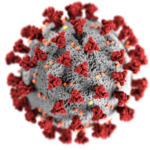
(AP) — Hawaiʻi’s top public health officials said Wednesday that the COVID-19 pandemic is still active but is moving into a new phase of the disease, in which people can test themselves at home and ideally avoid serious illness thanks to vaccination and the use of therapeutic treatments.
Gov. David Ige described the change as a transition from “emergency response” to “public health management.” He said at a news conference that state officials would be handling COVID-19 more similarly to how it copes with other diseases.
The adjustment has been underway for a few months, said Dr. Libby Char, the director of the state Department of Health.
One example is how the state uses contact tracers.
“We’ve seen a shift from trying to track down every single case and all of their contacts to instead getting the message out so that we all have our own personal COVID-19 preparedness plan,” said Dr. Sarah Kemble, the state’s epidemiologist.
Part of that is because home test kits are now widely available. But another reason is that universal contact tracing isn’t the best method to control an airborne disease like COVID-19, she said. People can follow self-isolation guidelines and notify those they’ve been in contact with about their exposure.
Kemble said countries that have fully vaccinated about 85% of their populations didn’t see the same spike in deaths and patients admitted to intensive care units even as cases surged. Hawaii has reached that threshold, she said.
“We do have reasons to be hopeful that more cases does not have to mean a large burden of critical illness and death,” Kemble said.
There are also multiple therapeutic drugs now available, that if taken within five days of symptoms emerging, can help prevent severe illness and hospitalization. People at high risk of developing severe illness from COVID-19 can get a prescription from their doctor.
On Wednesday, the Department of Health reported that the number of new daily cases rose by an average of 362 over the past seven days, up from 121 a month ago.
Fifty-one COVID-19 patients were hospitalized and two were in ICU wards.
Kemble said it’s too early to tell whether Hawaiʻi will experience a spike in patients in the ICU from the latest wave of cases. She said that should be more clear in two-to-three weeks.
Kemble said the pandemic was still underway, in that there remained “ongoing global uncontrolled transmission of COVID-19” and new variant strains continued to emerge. But the disease may be becoming endemic in the islands in that Hawaii may no longer face crises from coronavirus.
“It’s hard for us to know that because COVID has surprised us at every turn,” she said.
© copyright 2022 Associated Press. All rights reserved